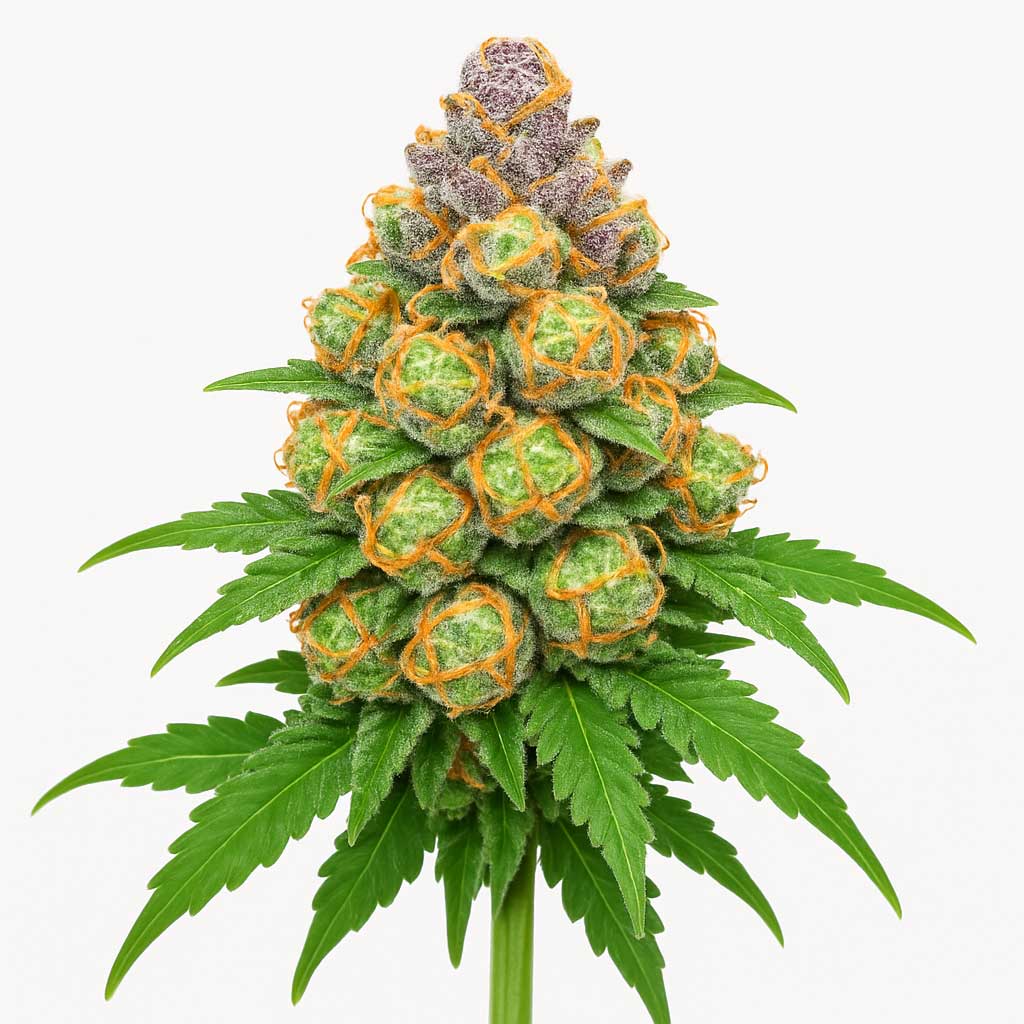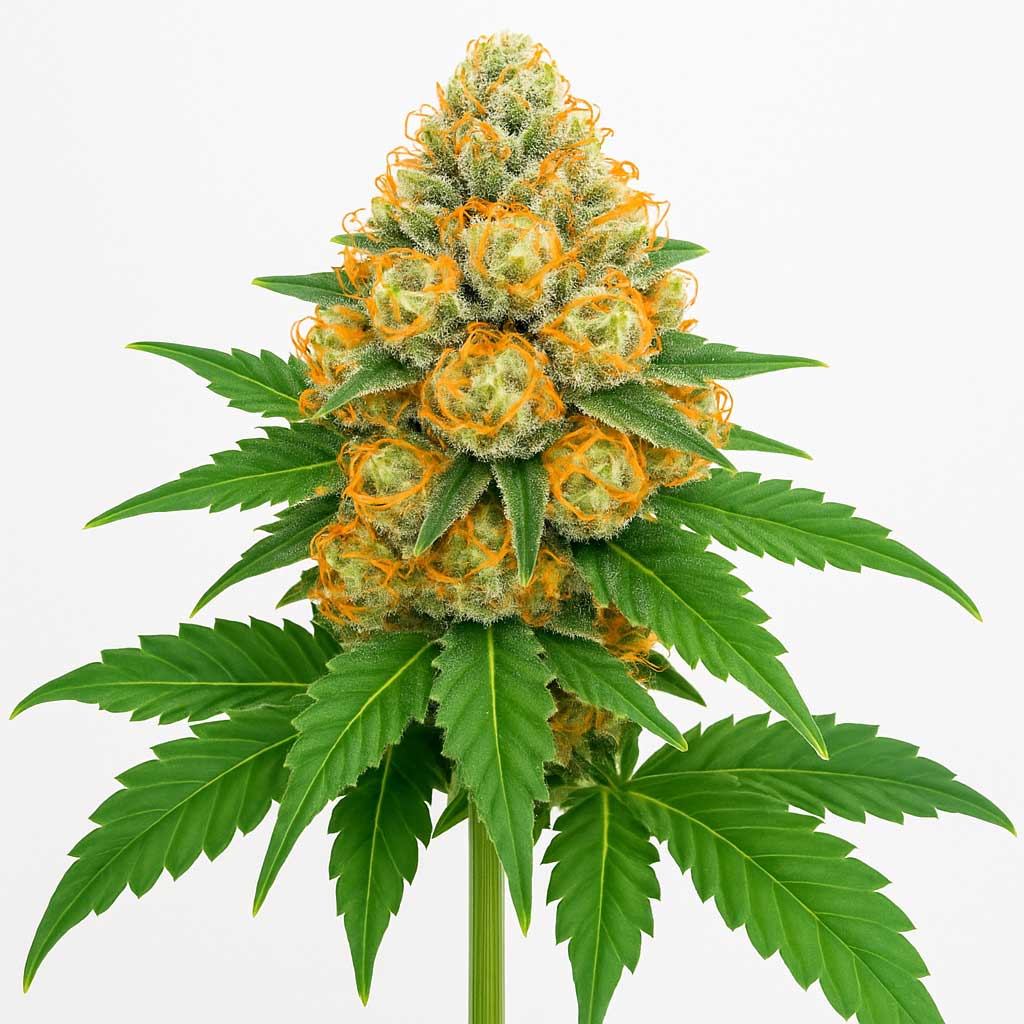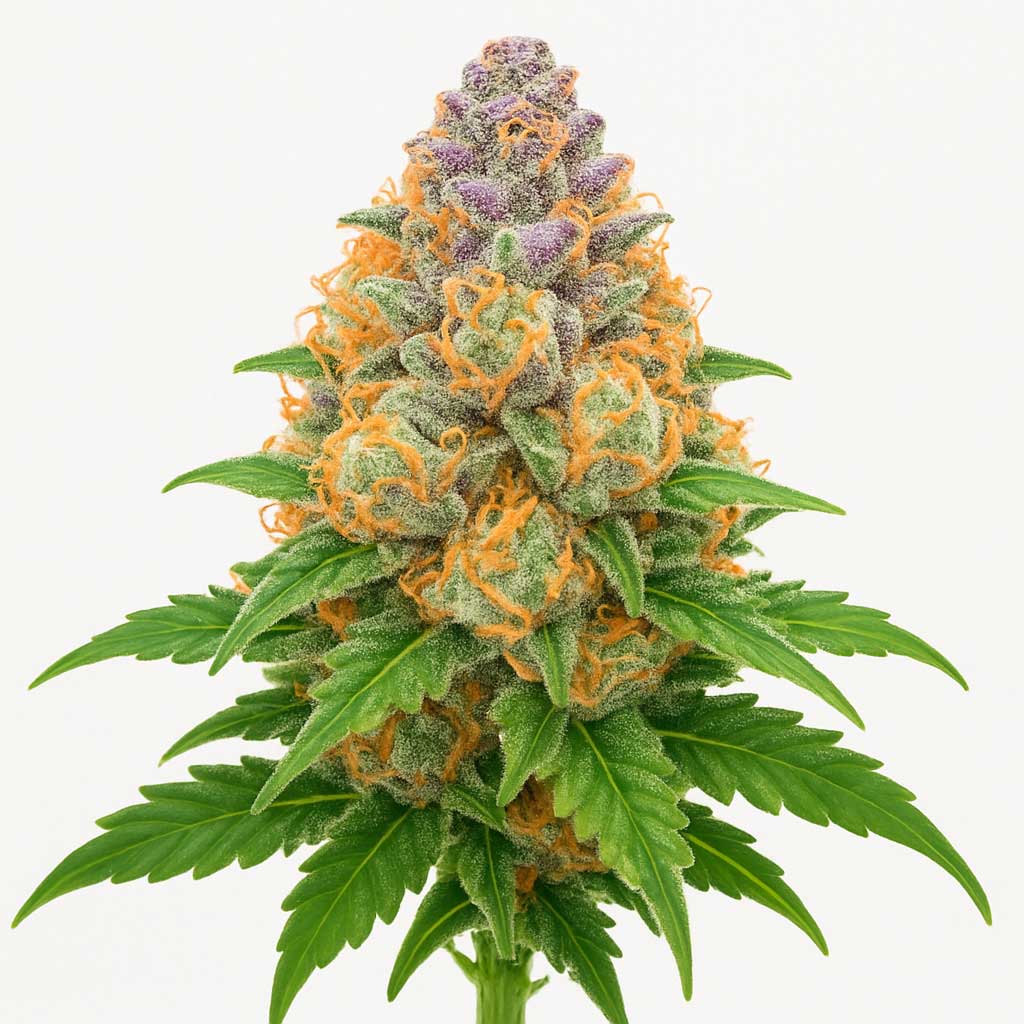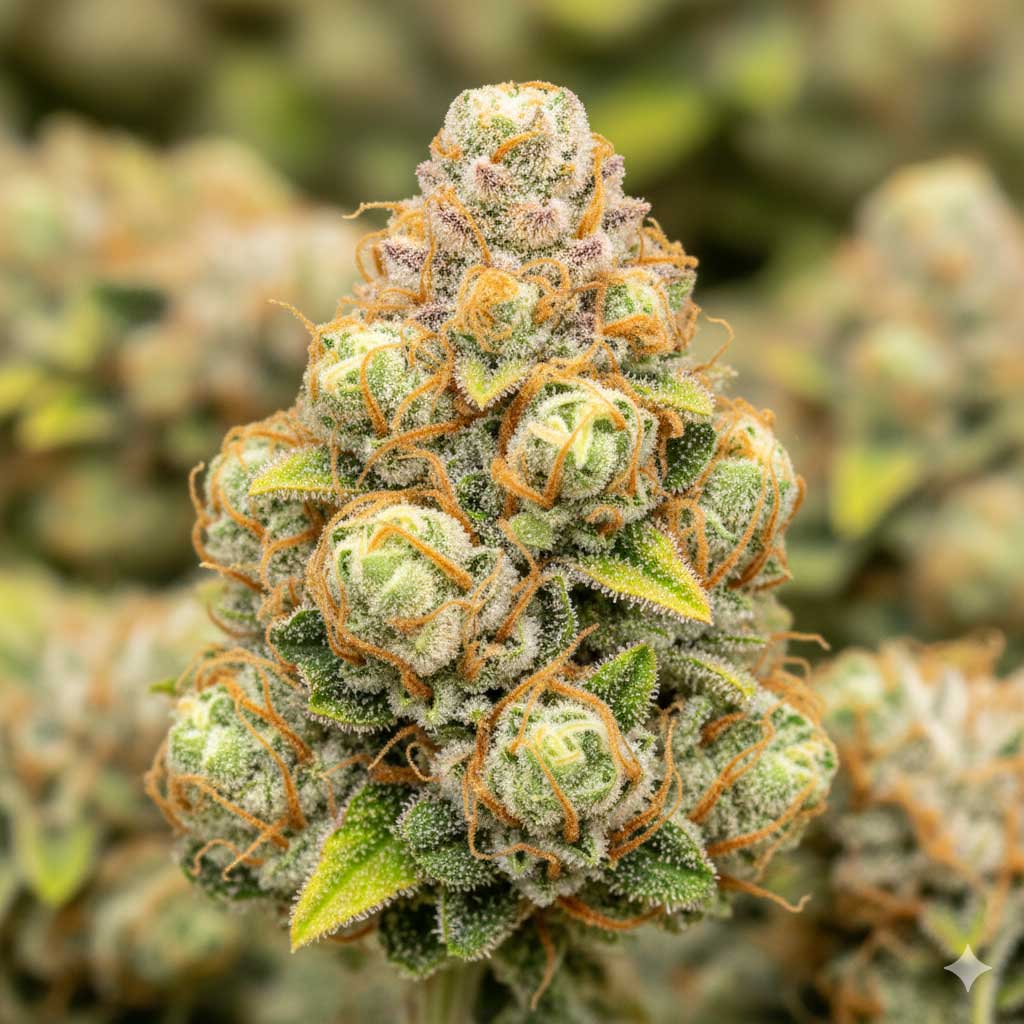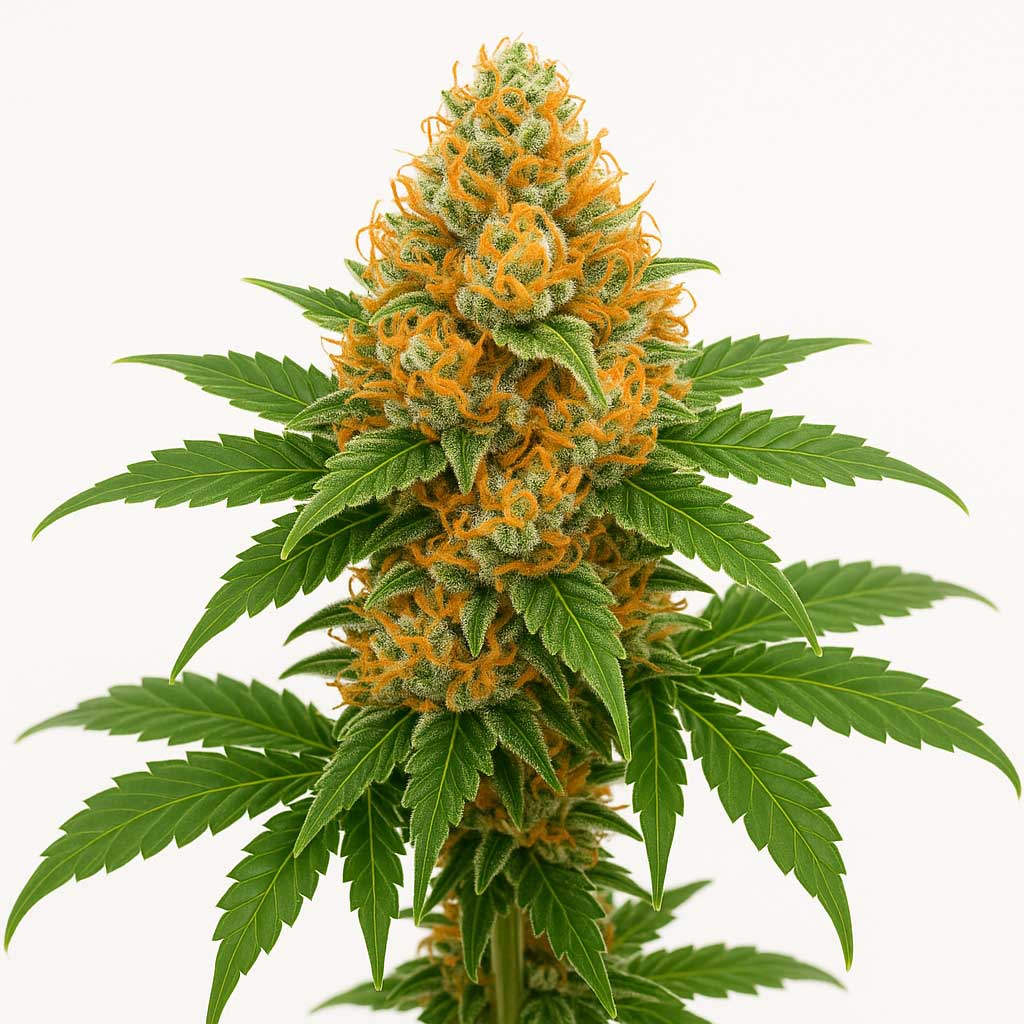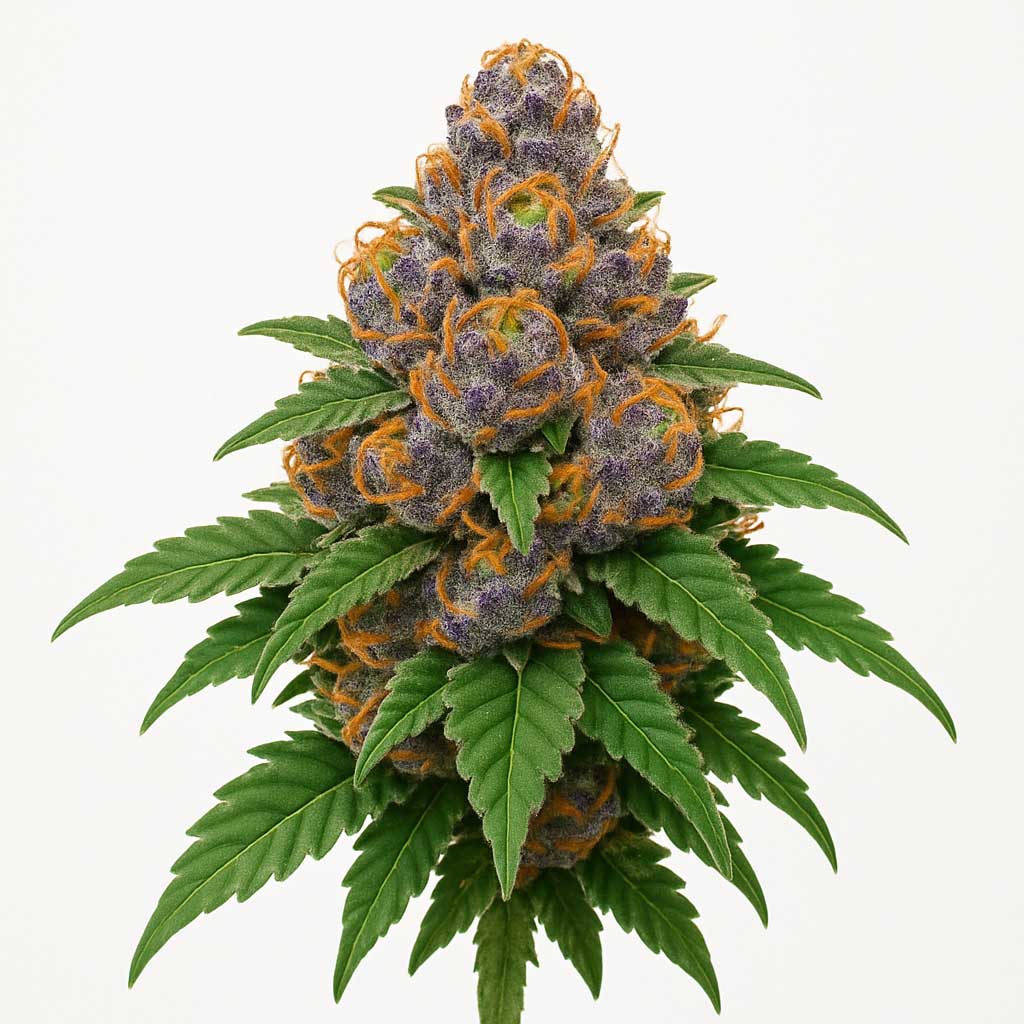Clementine Crush (Cannabis Strain) — Strainpedia
Clementine Crush is a highly aromatic and potent Sativa-Dominant Hybrid cultivar derived from a cross of Clementine x Chem D x (Orange Crush) (the exact back-cross varies by breeder). Recognized for its intense, sweet, and tangy citrus aroma, high resin production, and energetic effects, it is frequently referenced in horticultural education for its strong limonene profile and therapeutic versatility. The information below is intended strictly for scientific and botanical reference.
Quick Facts
| Genetics | Clementine x Chem D x Orange Crush (Approximate Lineage) |
|---|---|
| Variety | Sativa-Dominant Hybrid (approx. 60–70% Sativa) |
| Flowering Time | 9–10 weeks (63–70 days indoors) |
| Yield Potential | 450–600 g/m² (Moderate to High) |
| Plant Height | 120–160 cm; significant vertical stretch; best suited for training |
| Climate Preference | Controlled Indoor (Needs ample vertical space) |
| Difficulty | Intermediate (Requires height management and good structural support) |
Scientific & Botanical Overview
Clementine Crush plants typically exhibit a vigorous Sativa growth pattern, characterized by significant vertical stretching and lanky branching. The buds, while slightly looser than pure Indicas, are highly resinous and dense, often displaying bright lime-green hues with striking orange hairs. The defining feature is its powerful, almost overpowering citrus scent, a trait inherited from its Clementine and Orange Crush lineage, making it a favorite for terpene hunters. The flowering period is a standard 9–10 weeks, requiring patience for the full Sativa structure to mature.
Effects & Use-Cases (Reported)
- Commonly reported effects: intensely euphoric, mentally uplifting, focused, energetic, and talkative; provides a clean, fast-acting cerebral high with minimal physical weight.
- Use-case context: highly favored for daytime and morning use to enhance creativity, productivity, motivation, and mood; excellent for social settings.
- Note: These are observational reports, not medical claims; outcomes are not guaranteed.
Aroma & Flavors
- Aroma: dominating scent of fresh, ripe clementine and tangerine zest, often likened to sweet orange candy, underpinned by subtle notes of earthy spice and a hint of pungent fuel (from Chem D).
- Flavor: a burst of sharp, sweet citrus and orange on the inhale, leaving a zesty, clean, and slightly spicy aftertaste on the exhale.
- Terpene associations: limonene (dominant), caryophyllene, myrcene.
Tested Cannabinoid & Terpene Ranges
| Compound | Typical Range* | Notes |
|---|---|---|
| Δ⁹-THC | ~20–25% (reported up to 28%) | Potent cerebral effects; suitable for intermediate to experienced users. |
| CBD | ~0–1% | Generally present at low, trace levels. |
| Limonene | ~1.0–2.0%+ | Dominant terpene; responsible for the powerful citrus aroma and mood elevation. |
| Caryophyllene | ~0.3–0.6% | Contributes the spicy notes and helps modulate the cerebral high. |
| Myrcene | ~0.2–0.5% | Provides a slight earthy undertone and contributes to the body relaxation. |
| Pinene | ~0.1–0.3% | Subtle pine notes; may enhance focus and alertness. |
*Ranges are literature- and lab-report-informed references and can differ with environment, harvest timing, post-harvest handling, and analytical methods.
Cultivation Notes
- Light Cycle: 18/6 vegetative; 12/12 flowering
- Humidity Targets: 45–55% during flower; needs good ventilation to manage the tall, dense canopy.
- Nutrition: Moderate to heavy feeder; benefits from consistent Ca/Mg supplementation under high light intensity.
- Training: SCROG (Screen of Green), Topping, and LST are highly recommended to control its significant vertical stretch and maximize light exposure to the lower canopy.
- Harvest Window: Mid-to-Late October outdoors (Northern Hemisphere), requires support due to tall stature.
Grower Notes (Week-by-Week Snapshot)
- Weeks 1–3 (Transition/Stretch): aggressive stretch; must establish structural control (trellis/scrog) early; manage nutrient solution for transition.
- Weeks 4–6: dense flower set; perform necessary defoliation to improve airflow and light penetration; maintain high light intensity.
- Weeks 7–8: bulking phase; aroma is intensely strong (carbon filter required); buds are gaining weight; add support as needed.
- Weeks 9–10: ripening; initiate final flush; harvest when desired trichome maturity (aim for milky heads for maximum energizing effect).
- Post-Harvest: Dry 18–21 °C, 50–55% RH to lock in the intense citrus terpenes.
Timelines shift with genotype and environment; prioritize plant health markers and trichome maturity over calendar counts.
Genetic Lineage
Clementine Crush is a sophisticated Sativa-Dominant Hybrid that draws its lineage from high-energy, citrus-focused genetics. The key parent is Clementine (a Sativa powerhouse known for its intense orange aroma), which is often crossed with strains like Chem D and Orange Crush to boost resin production, potency, and further amplify the sweet citrus core, resulting in a highly potent and flavor-forward cultivar.
Research Insights
The experience of sharp focus and euphoria in Clementine Crush is a direct outcome of its high limonene dominance. Limonene is one of the most studied terpenes regarding mood elevation and anti-anxiety properties. The strain is a prime example of breeding efforts focused on maximizing this specific monoterpene to produce a powerful, energizing cerebral effect that remains relatively clean and non-sedating, a classic example of Sativa-dominant entourage effect synergy.
Frequently Asked Questions
Is Clementine Crush an Indica or Sativa?
Clementine Crush is classified as a potent Sativa-Dominant Hybrid (approx. 60–70% Sativa), celebrated for delivering fast-acting, energetic, and euphoric cerebral effects.
What does Clementine Crush smell and taste like?
It has an intense, sweet, and tangy aroma dominated by fresh clementine, tangerine zest, and sweet orange candy. The flavor is a clean, zesty citrus with a subtle spicy finish.
What are the typical effects?
Reported effects are intense euphoria, mental stimulation, sharp focus, and a burst of creative energy, making it excellent for daytime use.
How long does Clementine Crush take to flower?
Clementine Crush typically flowers in 9–10 weeks (63–70 days) indoors.
Is it suitable for beginners?
Clementine Crush is considered Intermediate in difficulty. Its significant vertical stretch requires effective training and management to maximize yield and control height.
Educational Disclaimer: This page is provided for scientific and horticultural reference only and does not constitute medical or promotional advice. Cannabis cultivation, possession, and use are regulated by local laws. Always comply with applicable legislation in your region.

